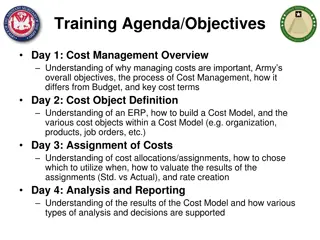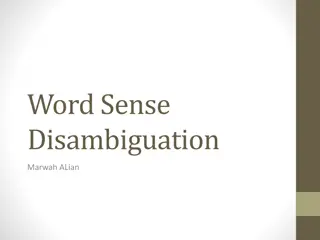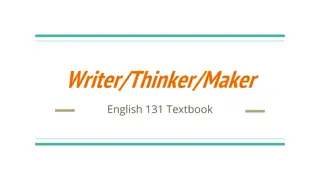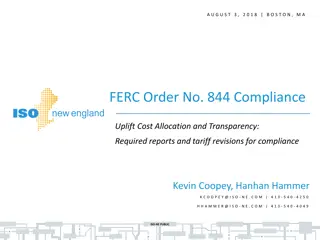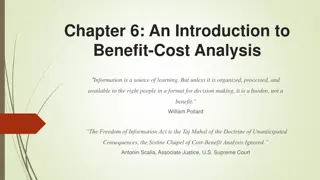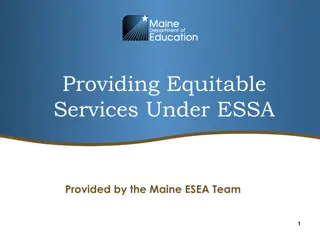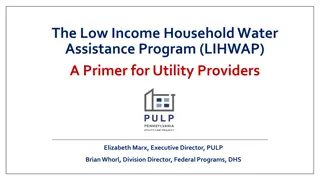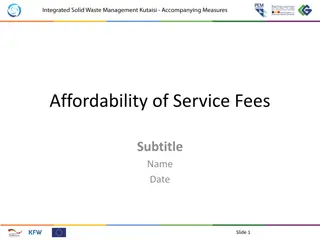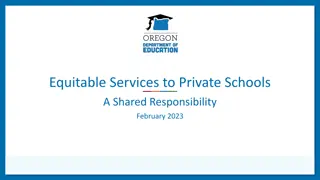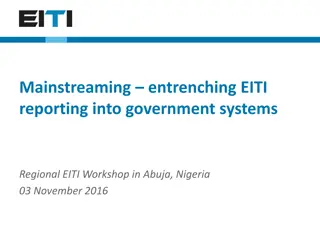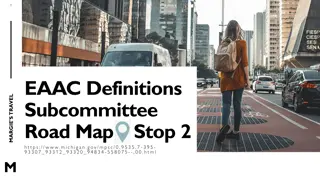
Ensuring Textbook Affordability and Cost Transparency through Policy Approaches
Explore existing policies and requirements aimed at promoting textbook affordability and cost transparency, and learn about faculty responsibilities, regulations, and legislation related to course materials. Discover the importance of OERLs in ensuring equitable opportunities for students.
Download Presentation

Please find below an Image/Link to download the presentation.
The content on the website is provided AS IS for your information and personal use only. It may not be sold, licensed, or shared on other websites without obtaining consent from the author. If you encounter any issues during the download, it is possible that the publisher has removed the file from their server.
You are allowed to download the files provided on this website for personal or commercial use, subject to the condition that they are used lawfully. All files are the property of their respective owners.
The content on the website is provided AS IS for your information and personal use only. It may not be sold, licensed, or shared on other websites without obtaining consent from the author.
E N D
Presentation Transcript
Creating Equitable Opportunities: Policy Approaches to Ensuring Cost Transparency and Textbook Affordability ASCCC OERI OERL Webinar Wednesday, April 13, 2022
Description What local policies, regulations, legislation, and federal requirements exist to promote textbook affordability and ensure cost transparency? What can and can t faculty ask students to purchase? We will begin with a review of existing requirements followed by a discussion on the effectiveness of these requirements and what roles OERLs should play with respect to textbook affordability.
Overview Existing requirements related to textbook affordability Are these requirements effective? What can and can t - faculty ask students to purchase What about cost transparency? Draft bill What do we need?
Existing Requirements Are there local policies, regulations, legislation, and/or federal requirements that aim to promote textbook affordability and ensure cost transparency?
Considering Costs Are faculty obligated to consider costs when selecting course materials?
Whats your local policy say? Yes, you are required to have one. When title 5 was modified in 2012 to permit faculty to require students to purchase resources which were not tangible , efforts were made in regulation to protect students. Title 5 59404. District Policies and Regulations for Instructional Materials. tinyurl.com/TextLeg.
Title 5 59404. District Policies and Regulations for Instructional Materials (a) The governing board of a community college district which requires that students provide instructional materials for a course shall adopt policies or regulations, consistent with the provisions of this subchapter, which specify the conditions under which such materials will be required. These policies and regulations shall direct instructors to take reasonable steps to minimize the cost and ensure the necessity of instructional materials. (b) The policies or regulations specified in subdivision (a) shall be published in each college catalog developed after the date of adoption.
What would an effective local policy look like? How do you balance faculty freedom of choice and cost considerations?
Is this OK? Number of Sections (number of faculty) Textbook Cost 4 (1) $150 - $200 7 (1) $60 3 (3) $23.30 - $58.25 4 (1) $18.75 - $25.00 5 (4) $0 6 (3) Unknown
What do reasonable steps look like? Title 5 59404. District Policies and Regulations for Instructional Materials These policies and regulations shall direct instructors to take reasonable steps to minimize the cost and ensure the necessity of instructional materials. Ideas?
Reasonable steps? Ensure that faculty know what their text costs. Ensure that faculty know how the cost of their text compares to the choices of others. Ensure that faculty are aware of what the text costs from the bookstore. Ensure that faculty are aware of available no-cost and low-cost options.
What can we ask students to buy? Resources for faculty convenience? Scantrons? Bluebooks? Calculators? Access to a homework system? A lab kit for chemistry? Clay for an art class?
Resources for faculty convenience? Of course not. Title 5 59400. Required Instructional Materials. (b) Required instructional materials shall not include materials used or designed primarily for administrative purposes, class management, course management or supervision.
Scantrons? Scantrons No! What s the purpose of a scantron? Faculty convenience. Not convinced? Student Fee Handbook, page 48 A scantron is a prepared form used for multiple-choice and true-or-false testing. A district may not charge a fee for scantrons as they do not have continuing value outside of the classroom.
Wait is that a fee? If a fee is required for registration, enrollment, entry into class, or completion of the required classroom objectives of a course, it can be classified as a course fee. Student Fee Handbook, page 2 - that instructional materials are listed as a subset of course fees.
Bluebooks? Used bluebooks if returned to students, are materials of continuing value to the student outside of the classroom setting. If the district is the sole provider of bluebooks, they must be provided to students at the district's actual cost. If used bluebooks are not returned they are not of continuing value to the student and thus should be provided by the district. Student Fee Handbook, page 44
Calculators? Equipment - Education Code section 76365 specifically mentions equipment as a material that has continuing value to the student outside of the classroom setting. Thus, students can be required to provide their own equipment for classes. Equipment Use Charge - In lieu of requiring students to provide certain expensive equipment, one suggestion is that students be given the option to rent the equipment from the district for the duration of the course. The instructional materials regulations do not address rental of equipment that is required by a district. Rather, the regulations only address the authority of districts to require the equipment.
Lab kit? Clay? Lab kit no. Clay yes. Welding rods and other transformed materials can have continuing value under limited circumstances, however. If welding rods are used to make a project or material that a student will take from the class, the student can be required to provide the rods that will be used for the project. For instance, if the welding rods are used to make an art object and the art object becomes the property of the student, welding rods may be required. Other examples of transformed materials that are usually rendered valueless after use include chemicals, gasoline, diesel fuel, and medical supplies such as Band-Aids, sterile syringes, and catheters.
Is it OK to ask students to pay for access to a homework system? Great question! The 2012 regulatory changes were all about determining when you could ask students to pay for access to electronic resources. Instructional Materials Guidelines, page 3. Class or course management systems, as well as any supervision software are not to be provided by students. If it is primarily beneficial to the college or district it is not allowed. It must benefit the student directly, not indirectly. Students may be burdened with legitimate non-tangible instructional materials, but should not be expected to provide resources that should be provided by the district.
What about transparency? What information should students have about course costs at the time of registration? What information are colleges required to provide?
Required Schedule Information There is a federal requirement that colleges provide textbook information in their online schedules at the time of registration (tinyurl.com/TextLeg). California state law mandates that the CCCs mark no-cost (ZTC) course sections (California Education Code 66406.9). Neither requirement is universally met and these requirements do not mandate transparency with respect to other costs.
Textbook Affordability and Transparency As of February 1, 2022 34 colleges do not provide textbook cost information to students prior to registration 22 colleges do not mark ZTC sections Shouldn t our students have this information when making choices? ??? do not have a policy to ensure faculty consider cost and necessity when selecting course resources
So There are existing textbook affordability requirements that colleges are not universally following. ASCCC OERI proposal suggested compliance with existing requirements be a prerequisite for obtaining ZTC funds. And supports cost transparency more generally.
AB 2624 Proposes to modifying the no-cost education code (AKA SB 1359) to include the existing federal cost information requirement plus all the other things a student might be asked to purchase. Unfortunately, it does not fix the existing law.
AB 2624 Exacerbates the Digital Conundrum CEC 66406.9 focuses on the marking of no-cost digital course materials. AB 2624 adds digital into the existing law two more times. AB 2624 redefines course materials to include all texts, devices, and software. In other words, it does not recognize that no-cost need not be digital and it creates a new definition of course materials that incorporates supplies that are generally not factored in when determining if a section is ZTC. But the focus on cost transparency is positive.
What can we do about text book costs? Do we need local policies senate policies? Board policies? Laws? Should any of this be a concern of the OERI and OERLs? What should you be doing if anything?
More Information ASCCC OERI Website (asccc-oeri.org) Resources Webinars and Events ASCCC OER E-Mail (oeri@asccc.org) Resources tinyurl.com/TextLeg


